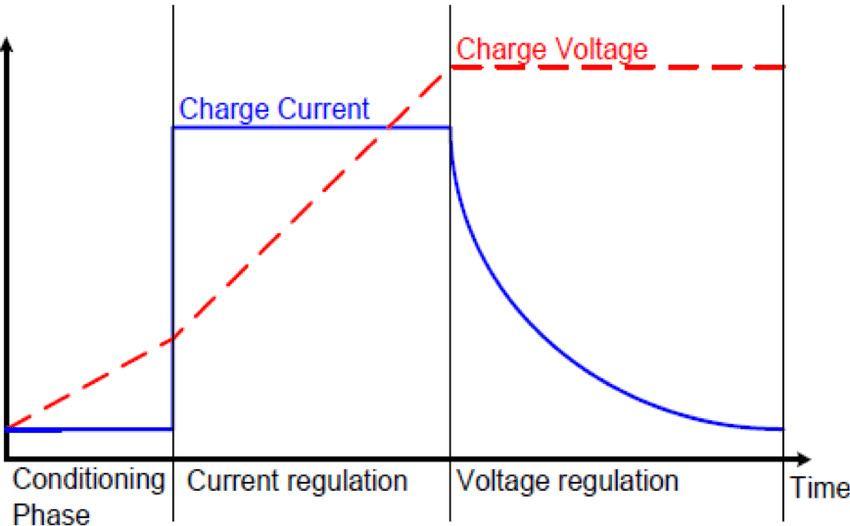
ISSN: 2321 9653; IC Value: 45.98; SJ Impact Factor: 7.538 Volume 10 Issue XI Nov 2022 Available at www.ijraset.com


ISSN: 2321 9653; IC Value: 45.98; SJ Impact Factor: 7.538 Volume 10 Issue XI Nov 2022 Available at www.ijraset.com
Hrigved Suryawanshi1, Prajoti Rane 2
Department of Electrical and Telecommunication Engineering, Atharva college of engineering, Mumbai1,2

Abstract: In the world of ever-changing modes of transport, one that remains and will prevail even in future is Motorbike. In today era electric vehicles are considered as one of the most versatile and sustainable means of transport. Hence, the aim of this research paper is to compare ideal and real life electric power train motorbike speed and range. This paper includes results conducted and tested effectively on a real life working and fully functioning model of an Electric motor bike.
Keywords: Electric motorbike, powertrain, Battery management system, E- Bike, E-Motorbike, lithium ion battery, EVs
With the rising prices of fossil fuel, there is also tremendous rise in the prices of roadway vehicles. Hence, a cost effective as well as sustainable way for our environment solution to this problem is use of E motorbikes. Electric vehicles are undoubtedly the future of our world, which also has been scientifically predicted a number of times. A year of researching has been done for this paper. One of the main reasons of this research paper is to compare the speed and range of ideal and real life electric power train motorbike and find out the difference that could be constructively used and put into objective. This paper gives us information related to the speed that a real time bike can go.
The objective of this project was to explore and built a real life working model of electric powertrain motorbike which is powered by lithium ion battery, it is low in maintenance, pragmatic and budget friendly compared to the existing products in the market for people who prefer living in middle class lifestyle.
Type lithium ion
Voltage 48volts Capacity 50ah (amp hour) Power 2.4 kilowatts
Type: BLDC motor
Running voltage: 48v (nominal voltage)
Speed control by hall sensor
Peak power: 1 kilowatts
Maximum RPM: 5000rpm
Gears used 14 teeth of the shaft & 42 teeth on the rear sprocket Drive system Chain drive
Various tests were conducted of the final prototype where the ideal speed and the projected speed is compared with the practical speed. All the data was recorded considering real life situation and use. Tests conducted are in real time environment. Charging pattern of the lithium ion battery was studied and compared. Range and motor rotations along with the motor performance is analyzed.
Battery = 2.4kw
Motor = 1kw per hour peak power
Ideal output = 2.4 times
Max speed = 68kmph

ISSN: 2321 9653; IC Value: 45.98; SJ Impact Factor: 7.538
Volume 10 Issue XI Nov 2022 Available at www.ijraset.com
Therefore, ideal range should be 2.4 x 68kms i.e. 163.2 kilometers
OBSERVED RANGE = 105 kilometers at medium speed & 80 90 kilometers at high speed

Gear ratio = 14/42 (front/rear)
Specified RPM for motor = 5000 RPM at rear wheel would be ~ 1666
Considering tire dimensions 2 meters are covered per rotation 1666 x 2 = 3332
Which makes ideal Top speed of the motorcycle = 198 km/hour
Maximum Speed observed through GPS and speedometer = 68 km/hour
Fig.1 speed vs time graph (High speed)
Fig.2 speed vs time graph (Medium speed)

ISSN: 2321 9653; IC Value: 45.98; SJ Impact Factor: 7.538 Volume 10 Issue XI Nov 2022 Available at www.ijraset.com

Typical lithium ion charge curve shows linear pattern for a time being during charge, charging for a span of 20 minutes is recorded and the data graph is produced.
Fig.3 Typical charge curve of lithium ion cell battery
Fig.4 linearity of battery charging for a time period Time vs Voltage


Linear pattern of the graph was observed for a brief time period. After that, the linearity is changed.
We would like to conclude this research paper by saying that we have successfully conducted and tested the speed and range parameters of an ideal electric bike and real life electric bike which is extensively powered by lithium ion battery. The ultimate goal of this paper has been achieved.
[1] Condro, Peter J. Prins, Robert. Hendrick, Curtis. “Design and Construction of a Modular 155V 40Ah Lithium Polymer Tractive Battery Pack.” June 2018. 2018 Systems and Information Engineering Design Symposium (SIEDS). IEEE, pp. 36 41.
[2] Gillespie, T.D. Fundamentals of Vehicle Dynamics. 1992. Warrendale, PA: Society of Automotive Engineers, Inc.
[3] Riezenman, M. J. “Engineering the EV future.” 1998. IEEE Spectrum, 35(11), 18 20.
[4] Foale, T. “Motorcycle handling and chassis design: the art You11:03 PM
[5] Chetan Mahadik ,Sumit Mahindrakar, Prof. Jayashree Deka DzAn Improved & Efficient Electric Bicycle system with the Power of Real time Information Sharingdz Published by Multidisciplinary Journal of Research in Engineering and Technology, Volume 1, Issue 2, Pg.215 222 on 2014
[6] R.S Jadoun & Sushil Kumar Choudhary DzDesign and fabrication of dual chargeable bicycle dz Published by Innovative Systems Design and Engineering www.iiste.org ISSN 2222 1727 (Paper) ISSN 2222 2871 (Online) Vol.5, No.8,
[7] [Fig.3] Prist, Mariorosario & Pallotta, Emanuele & Cicconi, Paolo & Venturini, Paolo & Monteriù, Andrea & Germani, Michele & Longhi, Sauro. (2018). “Energy Saving in Industrial Wireless Power Recharge System: Simulation of a PI Sliding Mode Control for a Non Inverting Buck Boost Converter”. 1 6. 10.1109/WoW.2018.8450919.
